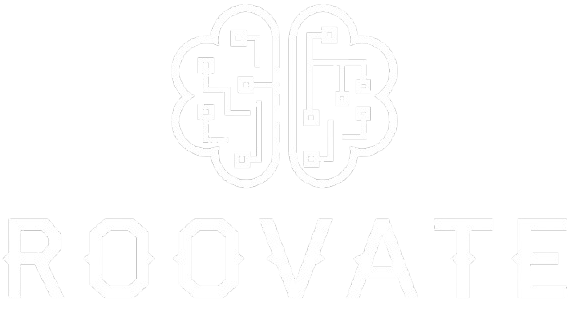Lepbound: Shaping the Future of Advanced Bonding Technology

Finding the right bonding technology can be tough. Lepbound is a big step forward in this field. This article shows how Lepbound offers strong, flexible, and tough solutions for sticking things together.
Keep reading to learn more!
Key Takeaways
- Lepbound is a new bonding technology that makes connections stronger and lasts longer. It works well in tough conditions like heat and moisture.
- This technology uses Cu-Cu hybrid bonding, improving electrical and thermal performance. It helps devices transfer data faster while using less power.
- Lepbound is safe and fits into many areas, including cars, planes, medical devices, electronics, and buildings. It meets high safety rules.
- Making things with Lepbound costs less over time because it’s durable. This saves companies money on fixing or making new products often.
- The future of Lepbound looks bright. It could change how we make lots of different things by making them better and more efficient to use.
What is Lepbound?

Lepbound is a new way to join materials together. It uses advanced bonding technology for better connections in many products.
Definition
Lepbound is an advanced bonding technology that improves how materials stick together. This technology provides strength, toughness, and flexibility. It goes beyond common adhesives.
Lepbound offers durability and environmental resistance.
One key feature of Lepbound is its use of Cu-Cu hybrid bonding. This method embeds metal contacts between dielectric materials. Heat treatment helps with the solid-state diffusion of copper atoms.
These innovations lead to better electrical and thermal conductivity, which allows for faster data transfer and lower power consumption.
Lepbound’s high-performance adhesive solution sets the stage for the future of advanced bonding technology.
Key features
Lepbound technology stands out with unique features that enhance its use in bonding solutions. This advanced bonding method delivers strength, durability, and flexibility.
- Durability: Lepbound provides a strong bond that lasts longer than common adhesives. Its advanced materials resist wear and tear, making it suitable for various applications.
- Flexibility: The technology allows for adaptable bonding solutions. This flexibility helps industries meet specific needs without compromising quality.
- Environmental Resistance: It withstands harsh conditions, such as heat and moisture. This resistance makes Lepbound ideal for use in diverse environments.
- Enhanced Strength: Lepbound bonds are tougher than many traditional options. They offer higher resistance to stress and strain.
- High Performance: Features like Cu-Cu hybrid bonding improve conductivity. This allows faster data transfer while reducing power consumption.
- Solid-State Diffusion: Heat treatment enables copper atoms to bond effectively at the atomic level. This process leads to stronger connections between materials.
- Compatibility: Lepbound can work with existing materials easily. Industries do not need to completely change their current setups to adopt this technology.
- Safety Standards: The product meets high safety regulations in various sectors, including medical devices and aerospace applications.
- Sustainability: The technology supports sustainable practices by reducing waste during manufacturing processes.
- Future Innovations: Ongoing advancements promise even more uses of Lepbound in cutting-edge technology fields like semiconductor integration and chiplet technology.
Safety information
Lepbound technology is safe for use in various settings. It offers durability, flexibility, and environmental resistance. These features make it suitable for industries like automotive and medical devices.
Advanced bonding technology provides more strength than common adhesives. This increased strength can lead to better safety standards in products.
Cu-Cu hybrid bonding uses heat treatment for solid-state diffusion of copper atoms between materials. This process enhances electrical and thermal conductivity, making it crucial for high-performance computing (HPC).
As manufacturers explore new methods, safety remains a top priority in the adoption of Lepbound technology across different sectors. The impact of Lepbound in various industries will be significant.
The Impact of Lepbound in Various Industries
Lepbound changes how industries work. It improves the way products are made and joined together, leading to better results across many fields.
Automotive
Lepbound technology is changing the automotive industry. It offers a strong and flexible bonding solution. This advanced bonding technology provides more strength and toughness than typical adhesives.
Cars can have better durability and performance with this innovation.
Using Cu-Cu hybrid bonding, manufacturers embed metal contacts between materials. They then use heat treatment for solid-state diffusion of copper atoms. This process improves electrical and thermal conductivity in vehicles.
It allows faster data transfer while reducing power consumption, making cars smarter and more efficient.
Aerospace
Lepbound technology is changing the aerospace industry. It offers strong and flexible bonding solutions. This advanced adhesive solution provides durability and environmental resistance.
Its features include improved strength and adaptability compared to regular adhesives. Lepbound’s Cu-Cu hybrid bonding uses heat treatment for solid-state diffusion of copper atoms.
This method enhances electrical and thermal conductivity, allowing for faster data transfer while reducing power consumption.
Aerospace products benefit from these advancements in bonding technology. With increased safety standards and reduced manufacturing costs, companies can produce better aircraft components.
Innovations like Lepbound help the industry move toward greater efficiency and sustainability in advanced manufacturing practices. The next section will explore how Lepbound impacts medical devices.
Medical Devices
Aerospace technologies influence the field of medical devices. Lepbound technology is a big step forward in this area. It offers strong and durable bonds for devices like implants and sensors.
This new bonding solution provides flexibility and resistance to environmental factors.
Lepbound uses advanced bonding techniques to enhance product quality. The use of Cu-Cu hybrid bonding ensures better electrical and thermal conductivity, making devices more efficient.
Medical devices benefit from higher strength and adaptability due to these innovations. These qualities lead to improved safety standards in healthcare products, ensuring they perform well under tough conditions.
Electronics and Consumer Goods
Lepbound technology greatly impacts the electronics and consumer goods industries. It uses Cu-Cu hybrid bonding, which prepares metal contacts between dielectric materials. This method allows heat treatment for solid-state diffusion of copper atoms.
Products made with Lepbound benefit from increased durability and strength.
This technology improves electrical and thermal conductivity too. As a result, it enables faster data transfer and reduces power consumption. Consumers enjoy better quality products that last longer and perform well.
Lepbound is indeed shaping the future of advanced bonding technology across these fields.
Construction and Infrastructure
Lepbound technology is changing construction and infrastructure. It offers strong, durable solutions for joining materials. This advanced bonding can endure tough conditions. Builders can use it for roads, bridges, and buildings.
Using Lepbound means less waste and better safety standards. The technology improves the strength of materials like composite materials. Its flexibility helps meet different project needs.
As a result, projects become more efficient and cost-effective while using cutting-edge technology in the industry.
Benefits of Adopting Lepbound in Manufacturing
Lepbound brings better quality to products made in factories. It also cuts down costs, making manufacturing more efficient and safe for everyone involved.
Enhanced product quality
Lepbound technology boosts product quality. It provides more strength and toughness than common adhesives. This makes products last longer and perform better. It also offers flexibility and environmental resistance, which are key for many industries.
Hybrid bonding methods, like Cu-Cu bonding, create stronger connections between materials. Heat treatment helps copper atoms bond at a solid-state level. This leads to enhanced electrical and thermal conductivity.
Faster data transfer means better performance in devices like computers and smartphones. Overall, Lepbound sets a new standard for advanced bonding technology that improves product quality across various sectors.
Reduced manufacturing costs
Lepbound technology helps cut manufacturing costs. It offers strong and tough bonding compared to common adhesives. This durability means fewer replacements and repairs over time. With Lepbound, companies can save money on materials and labor.
Using advanced bonding solutions like Cu-Cu hybrid bonding improves workflow efficiency. This reduces delays in production. The result is faster output at lower costs. By adopting Lepbound, businesses enhance their bottom line while maintaining high-quality products.
Improved safety standards
Reduced manufacturing costs lead to better results for companies. Improved safety standards follow closely behind with Lepbound technology. This advanced bonding solution enhances strength and durability in products.
It also helps meet strict safety guidelines in various industries.
Lepbound’s strong adhesive technology reduces the risk of product failure or accidents. Durable joints can withstand stress and environmental challenges. This increases reliability in critical areas like medical devices and aerospace components.
Enhanced safety leads to greater consumer trust, which benefits businesses overall.
Sustainability
Improved safety standards lead to a focus on sustainability. Lepbound technology offers more than just strength; it also promotes eco-friendly practices. Using advanced bonding forms reduces waste in manufacturing.
This helps keep our environment safe.
Lepbound’s strong, tough materials allow for longer-lasting products. These products need fewer replacements, which cuts down on resources used over time. By enhancing product quality with innovative bonding solutions, we can create a greener future.
The power of Cu-Cu hybrid bonding aids in reducing energy consumption too. Overall, this cutting-edge technology supports sustainable development across various industries while powering future high-performance computing (HPC) applications.
Implementing Lepbound Technology in Your Industry
Implementing Lepbound technology in your industry means checking if it works with your current materials. You should also train your technicians and engineers to maximize its benefits.
Assess compatibility with existing materials
Assessing compatibility with existing materials is key to using Lepbound technology. Companies should check if their current materials work well with this advanced bonding solution.
Lepbound uses Cu-Cu hybrid bonding, which embeds metal contacts between dielectric materials. This method requires heat treatment for solid-state diffusion of copper atoms. Ensuring that the right conditions are met will help achieve better strength and durability in products.
Compatibility tests can prevent costly mistakes down the line. Manufacturers need to analyze material properties before moving forward. This step ensures a smooth integration of chips using Lepbound’s high-performance adhesive solutions in various industries.
Next, companies must focus on training for technicians and engineers to maximize the benefits of this technology.
Training for technicians and engineers
Training for technicians and engineers is key to using Lepbound technology. Workers need to understand the new adhesive bonding methods. They should learn how Cu-Cu hybrid bonding works, including heat treatment for solid-state diffusion of copper atoms.
This training helps them grasp the strength and adaptability of Lepbound.
Proper training improves safety standards in manufacturing. Technicians will be aware of best practices while using this advanced bonding solution. Enhanced skills lead to better product quality and efficiency in work processes.
As they grow familiar with cutting-edge technology, they can explore future innovations in the semiconductor industry and high-performance computing (HPC).
Monitoring and evaluating performance
Monitoring and evaluating performance is crucial when using Lepbound technology. This advanced bonding solution offers increased durability, strength, and adaptability. It improves both electrical and thermal conductivity.
These features help in faster data transfer while cutting power consumption.
Companies need to regularly check how well Lepbound performs in their operations. They should assess its impact on product quality. Data from these evaluations can guide future innovations with Lepbound technology.
Using this information helps industries stay competitive while ensuring safety standards are met.
Exploring future innovations with Lepbound
Lepbound technology is changing the way we think about bonding. Its advanced features create strong and adaptable bonds that stand out from common adhesives. Innovations like Cu-Cu hybrid bonding combine metal contacts with dielectric materials.
This technique uses heat treatment for solid-state diffusion of copper atoms, leading to better performance.
Future innovations will focus on enhancing electrical and thermal conductivity. These improvements will allow for faster data transfer while cutting power use. Lepbound supports high-performance computing (HPC) systems by providing a reliable joining solution.
The technology promises even more durability and flexibility as it evolves in various industries.
Conclusion
Lepbound leads the way in bonding technology. This strong and flexible solution can change many industries. It brings better safety, lower costs, and higher quality to products. Using Lepbound means embracing a smarter future in manufacturing.
The possibilities are exciting as we explore more innovations together.
FAQs
-
What is Lepbound and how does it shape the future of advanced bonding technology?
Lepbound is a cutting-edge joining technology that uses CuCu hybrid bonding and solid-state diffusion for heterogeneous integration, shaping the future of advanced bonding technology.
-
How does Lepbound contribute to high-performance computing (HPC)?
By powering future HPC with D CuCu hybrid bonding, Lepbound brings about higher efficiency and performance in computing systems.
-
Can you explain what EUV extreme ultraviolet lithography means in relation to Lepbound?
EUV extreme ultraviolet lithography is a high-level methodology used by Lepbound as part of its advanced processes to enable more precise and efficient results.
-
Is solid-state diffusion an important aspect of this new technology?
Absolutely! Solid-state diffusion plays a crucial role in the formation process during CuCu hybrid bonding which helps achieve superior results in heterogeneous integration.
-
Why do we call this type of bonding process ‘heterogeneous integration’?
We refer to it as ‘heterogeneous integration’ because it involves integrating different types or sizes of components into one system using innovative technologies like those found in Lepbound’s approach.










